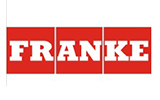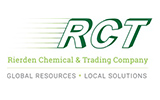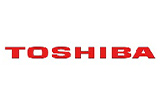Table of Contents
Chapter 1. Global Energy Management Systems Market Executive Summary
1.1. Global Energy Management Systems Market Size & Forecast (2025-2033)
1.2. Regional Summary
1.3. Segmental Summary
1.3.1. By System Type
1.3.2. By Component
1.3.3. By Deployment
1.3.4. By Vertical
1.4. Key Trends
1.5. Recession Impact
1.6. Analyst Recommendation & Conclusion
Chapter 2. Global Energy Management Systems Market Definition and Research Assumptions
2.1. Research Objective
2.2. Market Definition
2.3. Research Assumptions
2.3.1. Inclusion & Exclusion
2.3.2. Limitations
2.3.3. Supply Side Analysis
2.3.3.1. Availability
2.3.3.2. Infrastructure
2.3.3.3. Regulatory Environment
2.3.3.4. Market Competition
2.3.3.5. Economic Viability (Consumer's Perspective)
2.3.4. Demand Side Analysis
2.3.4.1. Regulatory Frameworks
2.3.4.2. Technological Advancements
2.3.4.3. Environmental Considerations
2.3.4.4. Consumer Awareness & Acceptance
2.4. Estimation Methodology
2.5. Years Considered for the Study
2.6. Currency Conversion Rates
Chapter 3. Global Energy Management Systems Market Dynamics
3.1. Market Drivers
3.1.1. Increasing Demand for Energy Efficiency
3.1.2. Proliferation of Renewable Energy Sources
3.1.3. Advancements in IoT and AI Technologies
3.2. Market Challenges
3.2.1. High Initial Installation Costs
3.2.2. Integration Complexities with Legacy Systems
3.3. Market Opportunities
3.3.1. Expansion in Emerging Markets
3.3.2. Adoption of Cloud-Based EMS Solutions
3.3.3. Growth in Smart Building Technologies
Chapter 4. Global Energy Management Systems Market Industry Analysis
4.1. Porter's 5 Force Model
4.1.1. Bargaining Power of Suppliers
4.1.2. Bargaining Power of Buyers
4.1.3. Threat of New Entrants
4.1.4. Threat of Substitutes
4.1.5. Competitive Rivalry
4.1.6. Futuristic Approach to Porter's 5 Force Model
4.1.7. Porter's 5 Force Impact Analysis
4.2. PESTEL Analysis
4.2.1. Political
4.2.2. Economical
4.2.3. Social
4.2.4. Technological
4.2.5. Environmental
4.2.6. Legal
4.3. Top Investment Opportunities
4.4. Top Winning Strategies
4.5. Disruptive Trends
4.6. Industry Expert Perspective
4.7. Analyst Recommendation & Conclusion
Chapter 5. Global Energy Management Systems Market Size & Forecasts by System Type 2025-2033
5.1. Segment Dashboard
5.2. Global Energy Management Systems Market: System Type Revenue Trend Analysis, 2022 & 2032 (USD Million/Billion)
5.2.1. IEMS (Industrial Energy Management Systems)
5.2.2. BEMS (Building Energy Management Systems)
5.2.3. HEMS (Home Energy Management Systems)
Chapter 6. Global Energy Management Systems Market Size & Forecasts by Component 2025-2033
6.1. Segment Dashboard
6.2. Global Energy Management Systems Market: Component Revenue Trend Analysis, 2022 & 2032 (USD Million/Billion)
6.2.1. Hardware
6.2.2. Software
Chapter 7. Global Energy Management Systems Market Size & Forecasts by Deployment 2025-2033
7.1. Segment Dashboard
7.2. Global Energy Management Systems Market: Deployment Revenue Trend Analysis, 2022 & 2032 (USD Million/Billion)
7.2.1. On-Premises
7.2.2. Cloud
Chapter 8. Global Energy Management Systems Market Size & Forecasts by Vertical 2025-2033
8.1. Segment Dashboard
8.2. Global Energy Management Systems Market: Vertical Revenue Trend Analysis, 2022 & 2032 (USD Million/Billion)
8.2.1. Manufacturing
8.2.2. Energy
8.2.3. Retail
8.2.4. Others
Chapter 9. Competitive Intelligence
9.1. Key Company SWOT Analysis
9.1.1. Schneider Electric SE
9.1.2. Siemens AG
9.1.3. Johnson Controls International PLC
9.2. Top Market Strategies
9.3. Company Profiles
9.3.1. Schneider Electric SE
9.3.1.1. Key Information
9.3.1.2. Overview
9.3.1.3. Financial (Subject to Data Availability)
9.3.1.4. Product Summary
9.3.1.5. Market Strategies
9.3.2. Siemens AG
9.3.3. Johnson Controls International PLC
9.3.4. ABB Ltd.
9.3.5. Honeywell International Inc.
9.3.6. Emerson Electric Co.
9.3.7. General Electric Company
9.3.8. Rockwell Automation, Inc.
9.3.9. Eaton Corporation
9.3.10. Yokogawa Electric Corporation
9.3.11. Cisco Systems, Inc.
9.3.12. Delta Electronics, Inc.
9.3.13. IBM Corporation
9.3.14. Mitsubishi Electric Corporation
9.3.15. EnerNOC, Inc.
Chapter 10. Research Process
10.1. Research Process
10.1.1. Data Mining
10.1.2. Analysis
10.1.3. Market Estimation
10.1.4. Validation
10.1.5. Publishing
10.2. Research Attributes























